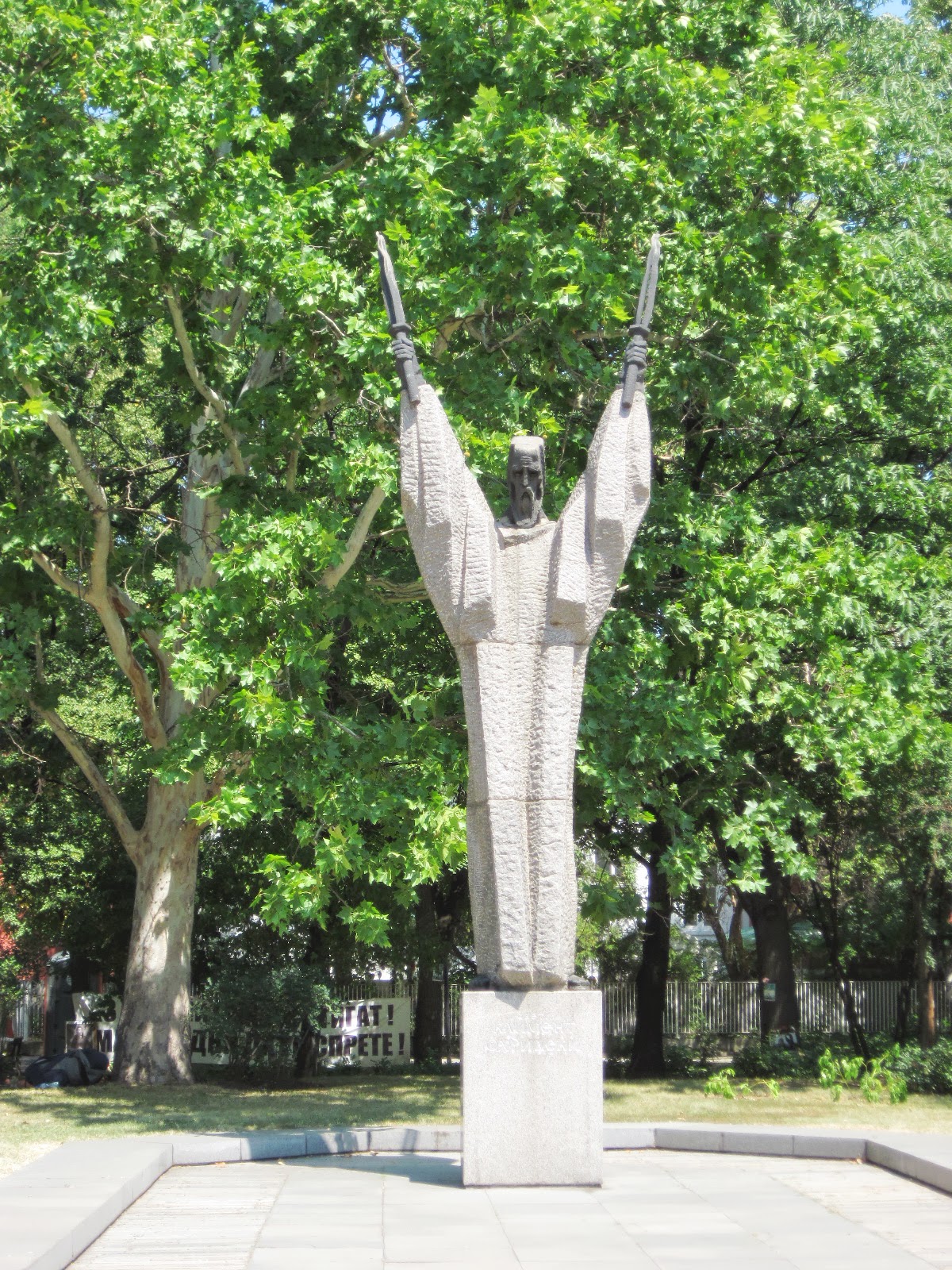8/14 Wednesday
We
have an ad for a Free City Tour that meets just a few blocks from our place, so
we decide to join in. Our guide is a tiny young woman, Petya, with a booming
tour guide voice. She’s a native, educated as a linguist, who left her job as a
data analyst to work with this fledgling tour company. She gives us an
excellent tour, just informative enough, jokey enough, walking us through the
main area of the city. We have about 20 people with us, from all over Europe,
mostly young people from the hostels. Our tour goes over two hours, and we
enjoy the entire time.
She
begins with the story of the somewhat racy statue of Saint Sophia that
dominates the city center, noting that the city is named for the Greek phrase
Hagia Sofia, meaning Holy Wisdom, and really has nothing to do with the saint.
She also tells us that the statue is a recent addition, placed on its pedestal
to replace a huge statue of Lenin, which was pulled down with all the other
statues honoring Communism, and sent off to the Museum of Socialist Art. We’ll
just have to visit that one.
At
one point, Petya tells us briefly of Bulgaria’s Tsar, during WWII when Bulgaria
was allied with Germany, finding ways to put off and delay the required
expulsion of the Bulgarian Jews, ultimately saving the entire population of
50,000 people. It’s an obvious point of national pride, and she becomes quite
emotional about it. This is also very interesting to us, having learned
something of the story of the Jews in Macedonia, who were delivered to Treblinka
under the rule of Bulgaria.
We
see this as an example of the complicated, intertwined history of the Balkans,
not that we would consider ourselves to be educated by the brief introductions
we have in tours or museums. We do experience something of the way perceptions
change so dramatically from one region to another. The Tsar is a hero to one, a
criminal to the other. Bulgaria hopes to regain its “homeland”, while Macedonia
fights for its sovereignty. At one time or another, Bulgaria formed alliances
with Montenegro, Serbia and Greece, with Germany, with Russia, and was also at
war with these same allies. The story of this region is intense and compelling.
After our tour, we stop at a little
café for a snack. Bob has one of his very favorite things: Chicken Soup. This
bowl is especially good, the kind of old world soup your gramma would have
made.
We
walk along the main street and pass the Natural History Museum, so we decide we
may as well stop. It’s empty, of course. The collection is a little dated, but
there’s something pleasingly academic about the place. The four floors of the
old building are filled with cabinets and glass displays that look like they
belong in a university. Every now and then we find a specimen left by some
jokester: a piece of rubber hose with the snakes, the blind mole mice arranged
in a threesome. Har har.
1 Video Included
Sofia Natural History Museum









No comments:
Post a Comment